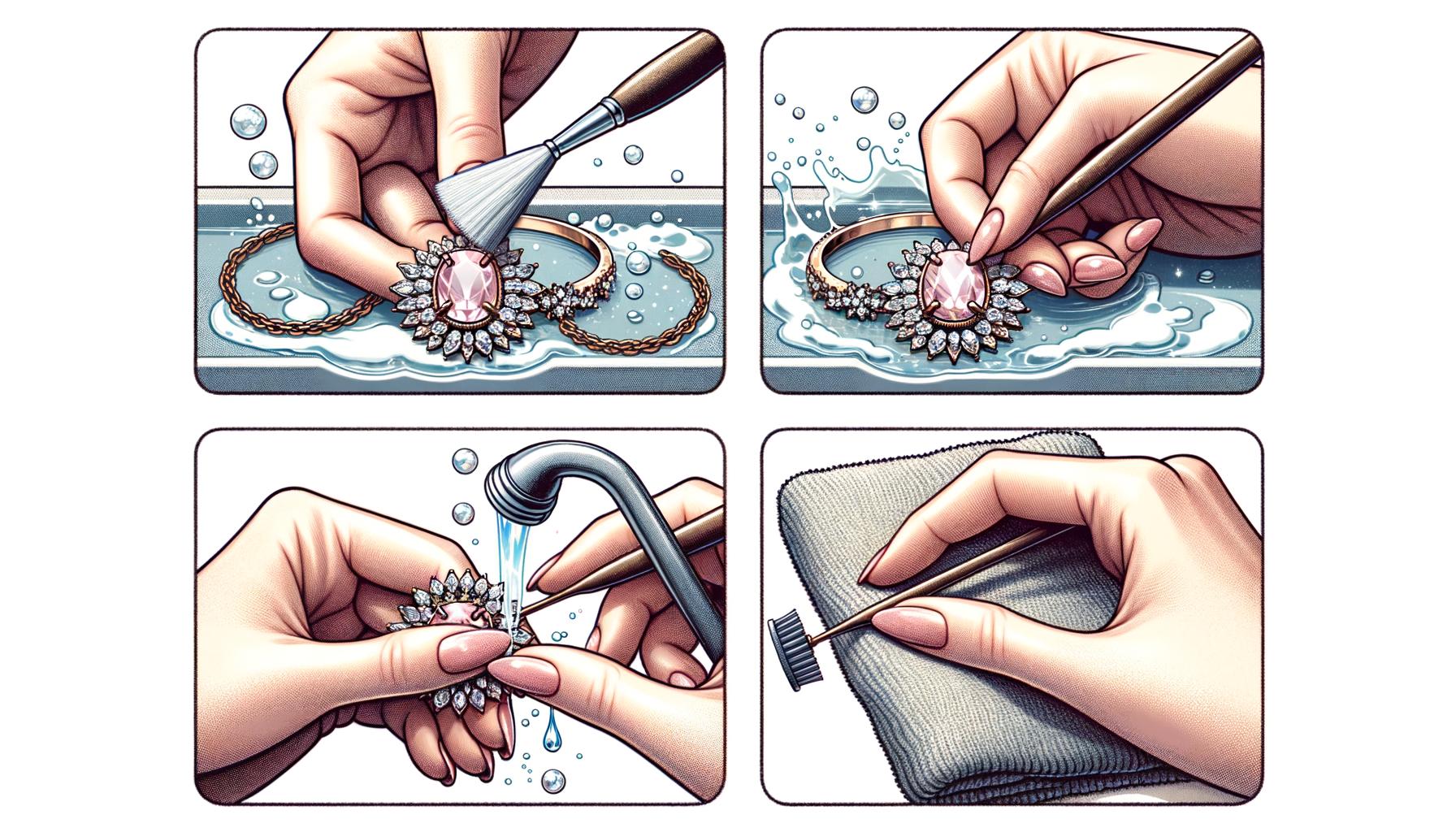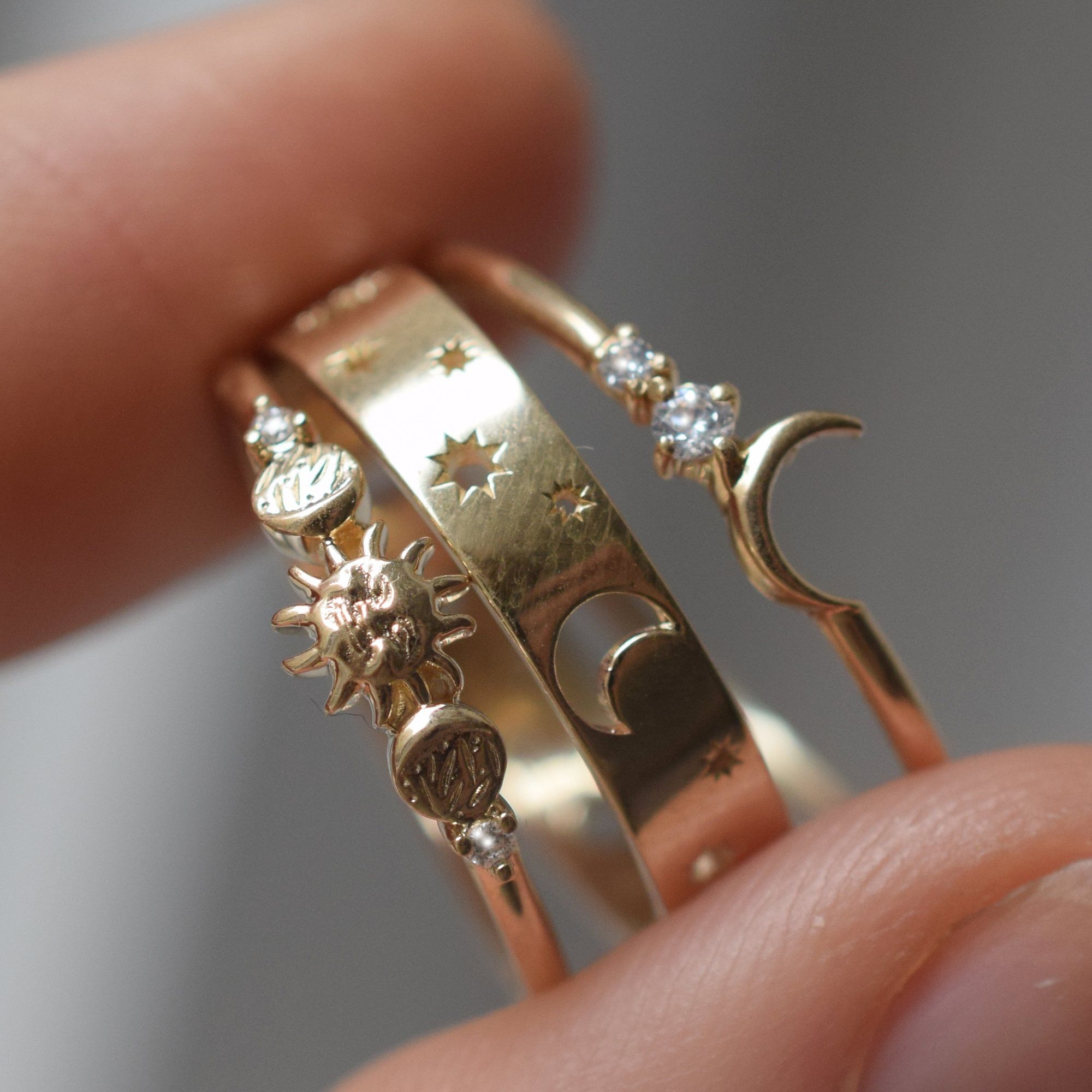Caring for jewelry with delicate stones requires a special touch and understanding. These precious pieces are often treasured heirlooms or significant gifts, making it imperative to know how to clean and care for jewelry with delicate stones properly. Improper maintenance can lead to scratches, discoloration, or even the loss of a stone, which significantly diminishes both the beauty and the value of your jewelry. Therefore, learning the appropriate methods for cleaning and storage is crucial for any jewelry enthusiast.
Delicate stones such as opals, pearls, and emeralds come with their own set of vulnerabilities that necessitate tailored care approaches. For instance, opals are highly sensitive to changes in temperature, while pearls can easily lose their luster when exposed to harsh chemicals or abrasives. Emeralds, despite their hardness, can be prone to internal fractures that make them susceptible to damage if not handled correctly. Understanding these unique characteristics will empower you to take better care of your finely crafted treasures.
The goal of this blog is to equip you with practical tips and effective steps for maintaining the integrity and allure of your delicate stone jewelry. From identifying what makes each type of stone vulnerable to mastering daily care practices and DIY cleaning solutions, you’ll find all the information you need right here.
Whether you’re looking to preserve an heirloom piece or simply want your favorite necklace to always look its best, read on for an in-depth guide that will ensure your precious gems remain just as stunning as the day you first wore them.
General Cleaning Guidelines
Cleaning jewelry with delicate stones requires a careful approach to ensure that you don’t inadvertently damage the precious gems or their settings. First and foremost, always handle your jewelry with clean hands and avoid any harsh movements that could dislodge or scratch the stones. A good rule of thumb is to inspect the jewelry piece for any visible damage before you start cleaning; this helps in identifying loose settings or cracks that need special attention.
Ideal tools and materials for cleaning include soft brushes, like an unused baby’s toothbrush, and mild detergents free from ammonia or harsh chemicals. You can pair these tools with lukewarm water to create a gentle yet effective cleaning solution. Avoid using toothpaste or baking soda as they contain abrasives that can scratch delicate surfaces.
Instead, consider using a mixture of warm water and a few drops of dish soap. Submerge the jewelry for no longer than 15 minutes, followed by gently brushing with the soft brush to get rid of grime.
Another important aspect is understanding how to clean and care for jewelry with delicate stones properly to prevent long-term damage. For instance, when rinsing your jewelry after cleaning, be sure to use lukewarm water and dry it immediately using a lint-free cloth. Air-drying might lead to water spots which can affect certain stones’ appearances over time. Additionally, avoid ultrasonic cleaners as the vibrations may be too harsh for fragile gems like opals or pearls.
| Tools/Materials | Dos | Don’ts |
|---|---|---|
| Soft Brush | Use gently | Use forcefully |
| Mild Detergent | Mix with warm water | Use directly without diluting |
| Lukewarm Water | Submerge briefly (max 15 min) | Soak for extended periods |
DIY Cleaning Solutions
For those who prefer a hands-on approach, creating your own cleaning solutions can be a safe and effective way to maintain the luster of your delicate stone jewelry. The key is to use ingredients that are gentle enough not to damage the stones or their settings.
Mild detergents such as baby shampoo or gentle dish soap mixed with water can often do the trick. Always ensure that you use lukewarm water, as extreme temperatures can cause harm, especially to temperature-sensitive stones like opals.
Before diving into your DIY cleaning session, it’s essential to take precautions by patch-testing any solution on a small, inconspicuous area of the jewelry first. This step helps ensure that there won’t be any adverse reactions in terms of discoloration or weakening of adhesives used in the setting.
Tools you’ll need include soft brushes (like a clean toothbrush), lint-free cloths, and possibly toothpicks for hard-to-reach areas. This toolkit will provide you with precision and control without risking damage through rough handling.
To start the cleaning process, soak your jewelry in the mild detergent solution for about 10-15 minutes. This soaking will loosen any dirt and grime. Then gently scrub with a soft brush, paying extra attention to settings where buildup is most likely to occur.
Rinse thoroughly with lukewarm water and pat dry with a lint-free cloth. Avoid using tissues or paper towels as they may scratch the delicate stones. By following these steps thoughtfully, you’ll master how to clean and care for jewelry with delicate stones safely at home.
| DIY Cleaning Tool | Description |
|---|---|
| Mild Detergent or Baby Shampoo | Gentle cleaning agents that won’t harm delicate stones |
| Soft Brush (clean toothbrush) | Used for precise and gentle scrubbing |
| Lint-Free Cloth | Perfect for drying without scratching surfaces |
Professional Cleaning Services
When it comes to cleaning your jewelry with delicate stones, there’s no substitute for professional expertise. While at-home methods can be useful for regular maintenance, there are situations where professional cleaning is imperative.
For instance, if your piece has accumulated significant grime or you suspect structural issues like loose settings or cracks in the stone, it’s best to leave it to the experts. A reputable jeweler will have specialized tools and products designed specifically for sensitive stones such as opals and pearls, ensuring they are cleaned without risk of damage.
So how do you select a trustworthy jeweler for this task? Start by seeking recommendations from friends or family who share an interest in fine jewelry. Online reviews can also provide insights into a jeweler’s reputation and service quality.
Ensure that the jeweler specializes in delicate stone care; ask if they have experience with specific types of stones featured in your collection. Inquiring about their cleaning process is essential: A reliable jeweler should be transparent about the techniques and products used.
Before handing over your precious items, ask relevant questions to gauge the jeweler’s proficiency in handling delicate pieces. Inquire about how they will clean the jewelry and whether any procedures could potentially harm it.
For example, professional cleaning should avoid ultrasonic cleaners for porous stones like opals or pearls, which could get damaged by high-frequency sound waves and intense water pressure. Knowing how to clean and care for jewelry with delicate stones includes being informed about what goes on behind the scenes, ensuring that your treasures are in capable hands every step of the way.
Daily Care and Maintenance
Taking proactive steps in the daily care and maintenance of your delicate stone jewelry is essential for preserving its beauty and durability. Knowing how to clean and care for jewelry with delicate stones is paramount for any enthusiast or collector. One of the first rules is to be mindful of when you wear your pieces.
It’s advisable to put on your jewelry after you’ve finished applying any cosmetics, including lotion, perfume, or hairspray. These products contain chemicals that can mar the surface or weaken the setting of delicate stones like pearls and opals.
Avoid Daily Hazards
Daily activities can expose your delicate stone jewelry to potential risks. For instance, it’s a good idea to remove rings and bracelets before engaging in tasks such as cleaning, cooking, or gardening. Chemical cleaners, abrasive surfaces, and impacts can easily damage fragile gems like emeralds or opals.
Swimming pools pose another risk due to chlorine, which can dull their luster over time. By avoiding these everyday hazards, you help ensure that your delicate pieces remain as splendid as the day you acquired them.
Simple Daily Maintenance Tips
To maintain the pristine condition of your delicate stone jewelry, implement some straightforward daily habits. For starters, gently wiping down each piece with a soft cloth at the end of the day removes oils and grime accumulated from wearing it. You don’t need fancy materials; a simple microfiber cloth will suffice.
Additionally, give special attention to clasps, settings, and other intricate areas where dirt tends to build up. Light brushing with a soft-bristled brush can also help keep these parts clean without causing damage.
Safe Storage Solutions
Proper storage greatly influences how well your delicate stone jewelry holds up over time. Avoid tossing multiple items into a single drawer where they can become entangled or scratched against each other. Instead, use individual soft pouches or lined compartments in a jewelry box designed specifically for such items.
When storing pearl necklaces or bracelets, lay them flat rather than hanging them to avoid stretching their silk strings over time. Employing these storage solutions not only helps prevent physical damage but also contributes positively to long-term maintenance efforts.
By integrating these daily care habits into your routine and knowing how best to clean and store each type of gemstone properly, you’ll extend the lifespan of your cherished pieces significantly while keeping them looking bright and beautiful for years to come.
Special Precautions for Each Type of Stone
When it comes to opals, these stones are particularly sensitive to water and sudden temperature changes. Opals are composed of a significant amount of water, making them susceptible to expansion and contraction when exposed to extreme conditions. To clean your opal jewelry effectively, avoid soaking them in any cleaning solutions.
Instead, use a damp cloth lightly moistened with warm water and gently wipe the surface. Dry the opal immediately using a soft, dry cloth to prevent prolonged exposure to moisture. Additionally, storing opals in controlled environments where temperature fluctuations are minimized will help preserve their innate luster.
Pearls demand special attention due to their organic origin and delicate nacre layers. One should always use specialized pearl-cleaning cloths that contain microfibers specifically designed for such purposes. Avoid abrasives at all costs as they can scratch the tender surface of pearls.
If deeper cleaning is needed, a mild solution of lukewarm water and gentle soap can be used sparingly; just ensure you do not immerse the pearls fully in the mixture. Rinse quickly with clean water afterward and pat dry with a lint-free cloth. It’s advisable to place pearls in dedicated compartments away from other jewelry items that might cause scratches when stored.
Emeralds are another category requiring unique care due to their natural inclusions that make them more brittle than other gemstones. Cleaning emeralds involves preventing scratches by avoiding harsh chemicals or abrasive materials completely. A small bowl containing room-temperature water mixed with mild dish soap can serve as an effective cleaner for emeralds.
Submerge the emerald briefly but do not soak; instead, use a soft-bristle brush to gently scrub around settings while avoiding excess pressure directly on the stone itself. Afterward, rinse under mild running water and dab carefully with a soft cloth until dry.
Implementing these tailored steps allows one to maintain various types of delicate stones properly without falling into common pitfalls associated with improper care methods often damaging your valuable pieces’ integrity over time.
- Use only pearl-specific cleaning cloths or soft microfiber cloths.
- Avoid soaking opals or exposing them to sudden temperature changes.
- Never use harsh chemicals or abrasives on emeralds; opt for mild soap solutions instead.
- Gently wipe opals with dampened microfiber cloth.
- Clean pearls using minimal amounts of lukewarm soapy water followed by quick rinses.
- Brush around emerald settings lightly without applying excessive force.
Storage Solutions to Protect Delicate Stones
Proper storage is crucial for maintaining the quality and longevity of your delicate stone jewelry. One of the best ways to protect these precious pieces is by utilizing soft pouches or lined compartments.
These storage solutions provide a cushioned environment that reduces the risk of scratches and other damage. When you store each piece in its own pouch or compartment, you can prevent them from coming into contact with one another, which can be particularly beneficial for softer stones like opals and pearls.
Another effective storage solution is using jewelry boxes with specific sections designed to hold rings, necklaces, bracelets, and earrings separately. Look for boxes lined with fabric like velvet or satin that offer added padding and prevent moisture build-up. Some jewelry boxes also come with desiccant packets to help control humidity levels within the box, thereby offering an extra layer of protection against potential water damage, especially important for moisture-sensitive stones such as opals.
To avoid tangling or scratching, consider organizing your jewelry based on type-grouping all rings together, all necklaces together, etc.-and using small bags or twist ties for chains to keep them untangled. Here’s a quick checklist:
- Utilize soft pouches or lined compartments
- Store each piece separately to avoid direct contact
- Choose a jewelry box with designated sections
- Look for fabric-lined interiors in storage options
- Include desiccant packets if possible
- Group similar types of jewelry together but keep chains untangled
Knowing how to clean and care for jewelry with delicate stones also means understanding the importance of seasonal maintenance checks. Sometimes shifting weather conditions could affect your stone settings or their inherent qualities. Checking on your stored pieces every few months can ensure they remain in optimal condition without any unforeseen issues arising due to improper storage practices.
Common Mistakes to Avoid
When it comes to learning how to clean and care for jewelry with delicate stones, one of the most crucial elements is knowing what not to do. There are common mistakes that many people make which can inadvertently damage their precious pieces. First, one frequent error is using harsh cleaning agents or chemicals.
Many household cleaners, including bleach and ammonia-based products, can erode the surface of delicate stones like pearls or opals. Always opt for a mild detergent mixed with lukewarm water as your cleaning solution.
Using Abrasive Tools
Another misstep to avoid is using abrasive tools such as stiff brushes or scouring pads. These items can scratch the surface of soft gemstones, leaving them looking dull and damaged. Instead, use a soft-bristled brush (like an old toothbrush) designed specifically for jewelry cleaning. Gently work on removing any debris or buildup without applying undue pressure. The emphasis should always be on gentle handling to preserve the integrity of your jewelry.
Improper Storage Practices
Ignoring proper storage solutions is also a common pitfall that can lead to long-term damage. Placing delicate stone jewelry haphazardly in drawers or allowing it to tangle with other pieces significantly increases the risk of scratches and breakage. Use individual soft pouches or lined compartments within a jewelry box to store each piece separately. This will prevent unnecessary friction and keep your stones pristine.
Lastly, neglecting regular maintenance checks is another mistake that can compromise the quality of your jewelry over time. Make it a habit to periodically inspect your pieces for loose settings or damaged stones, and seek professional help if you notice any issues. Being proactive about care will extend the lifespan of your valuable jewelry collection significantly.
Conclusion
In summation, ensuring the longevity and beauty of your jewelry with delicate stones requires understanding the specific needs of each type of gemstone. From opals and pearls to emeralds, each stone possesses unique vulnerabilities that necessitate tailored care routines. General cleaning guidelines emphasize using gentle tools and materials, while DIY solutions offer safe alternatives for at-home maintenance. When in doubt, professional cleaning services stand as a trustworthy option to preserve the integrity of your precious pieces.
Daily care practices such as avoiding harsh chemicals, wearing jewelry after applying makeup, and choosing proper storage solutions can make a significant difference in maintaining the luster of delicate stones. Special precautions tailored to individual types of stones further underscore the importance of personalized care strategies. Recognizing common mistakes-such as neglecting regular maintenance or using inappropriate cleaning agents-can help you avoid long-term damage.
Ultimately, knowing how to clean and care for jewelry with delicate stones is crucial for safeguarding their aesthetic appeal and value over time. By following recommended practices and being mindful of each stone’s requirements, you invest not just in preserving these exquisite items but also in honoring the craftsmanship that went into creating them.
We encourage you to share your experiences and tips in the comments section below, subscribe for more insightful articles on jewelry care, and explore related resources we’ve linked for further reading about maintaining your cherished collections.
Frequently Asked Questions
How to Clean Jewelry With Gemstones?
To clean jewelry with gemstones, it is important to use a gentle approach to avoid damaging the stones or their settings. Begin by filling a bowl with lukewarm water and adding a few drops of mild dishwashing soap. Place the jewelry in the soapy water and let it soak for a few minutes.
Using a soft-bristled toothbrush, gently scrub around the gemstones, taking care not to press too hard. Rinse the jewelry thoroughly under warm running water to remove any remaining soap. Finally, pat dry with a soft, lint-free cloth and allow the jewelry to air dry completely before wearing or storing it.
How Do You Clean Delicate Jewelry?
Cleaning delicate jewelry requires extra caution to preserve its intricate details and prevent damage. First, prepare a solution of lukewarm water mixed with a small amount of mild dish soap in a bowl. Gently place your delicate piece into the solution and allow it to soak briefly without leaving it submerged for too long.
Use a very soft-bristled toothbrush or even an artist’s paintbrush to carefully clean any crevices or patterns on the piece. Be sure not to apply too much pressure during this process. Once cleaned, rinse the jewelry gently under lukewarm water and pat it dry with a microfiber cloth before setting aside in a safe place.
How Do You Clean Rocks for Jewelry?
Cleaning rocks intended for use in jewelry involves removing any surface dirt while preserving their natural beauty. Start by rinsing the rocks under plain warm water to eliminate loose dirt particles. If more thorough cleaning is necessary, prepare a mixture of warm water and mild detergent in a bowl, then submerge the rocks for several minutes.
Gently scrub each rock using an old toothbrush or soft brush, being careful not to scratch or chip their surfaces during this process. After brushing away all impurities, ensure that you rinse each rock completely under clear running water before drying them off with a soft towel or allowing them air-dry naturally on a protected surface away from direct sunlight.

Welcome to my jewelry blog! My name is Sarah and I am the owner of this blog.
I love making jewelry and sharing my creations with others.
So whether you’re someone who loves wearing jewelry yourself or simply enjoys learning about it, be sure to check out my blog for insightful posts on everything related to this exciting topic!





